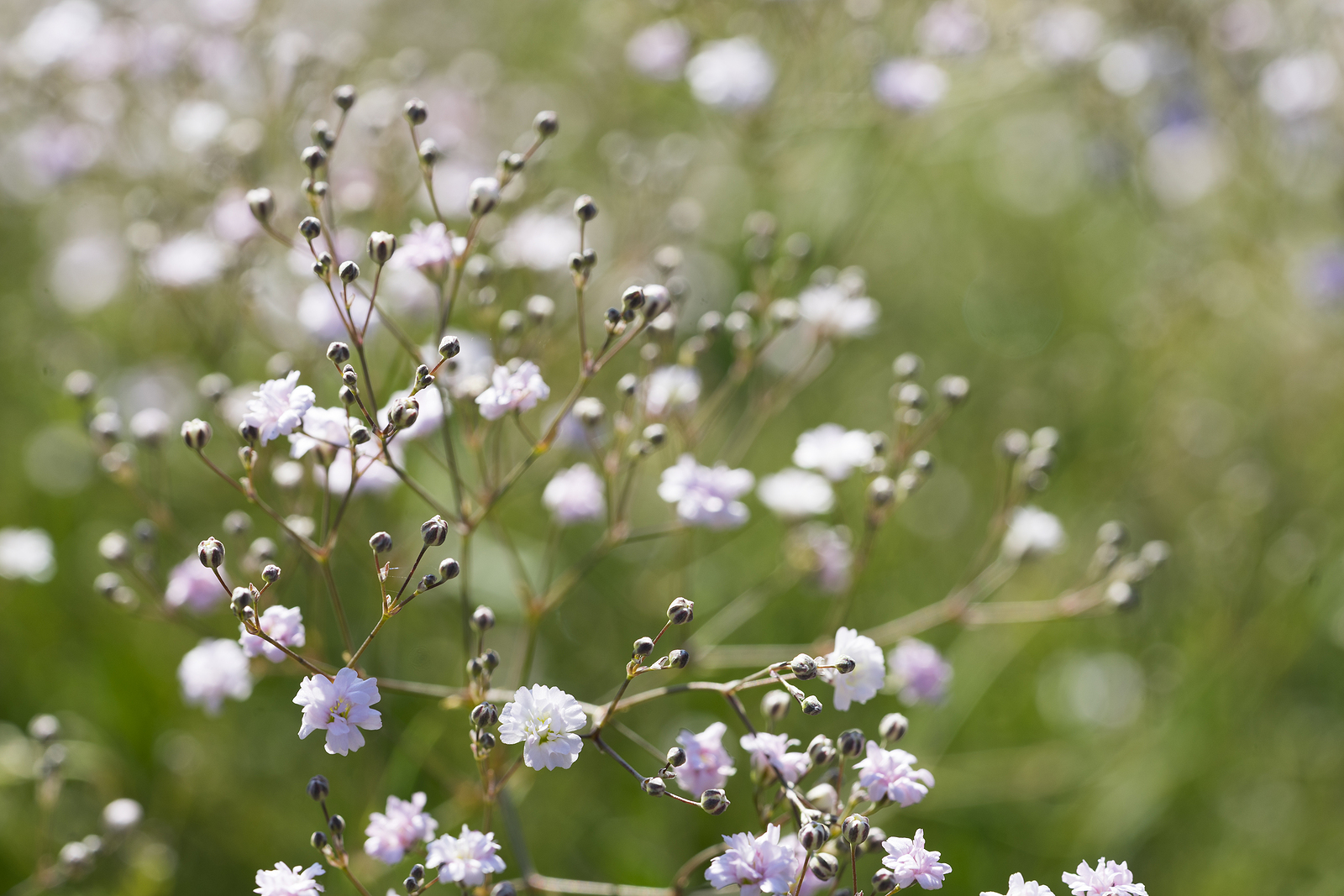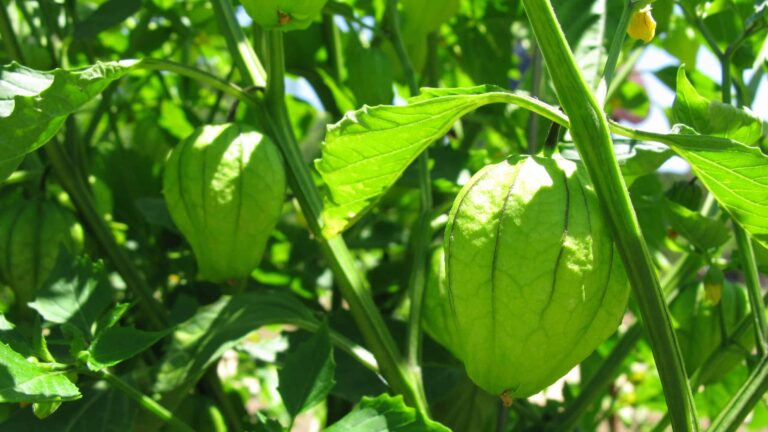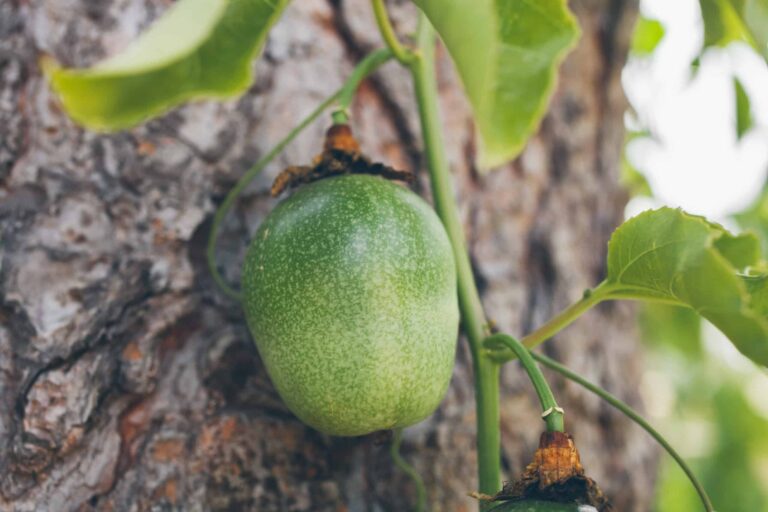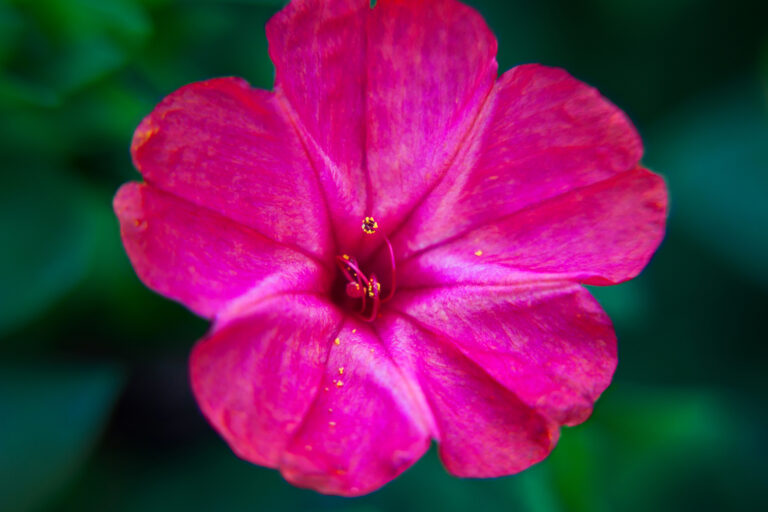How to Grow Baby’s Breath — Gypsophila
Gypsophila–commonly called baby’s breath–bears clouds of tiny white flowers in summer. They are prized by flower arrangers. They are a beautiful addition to flower beds, cutting gardens, and large containers.
Baby’s breaths belong to the genus Gypsophila. There are about 100 species, both annuals, and perennials.
Perennial Gypsophila is shrub-like plants bearing minutely branched wiry stems starred with small flowers. The Gypsophila breath is long-lived in the right growing conditions. They are most showy when planted in groups of three or more.
Good Products for Growing Flowers at Amazon:
- Garden Safe Snail and Slug Bait
- Bonide Sulfur Fungicide
- Monterey BT Caterpillar Killer
- Neem Bliss 100-% Cold Pressed Neem Oil
Annual Gypsophila is an easily grown hardy annual. Planted in spring, it will bloom by early summer. Annuals Gypsophila looks best in beds and borders when grown in groups of a dozen or more.
Both annual and perennial Gypsophila grow best in cool to warm weather, not too hot.
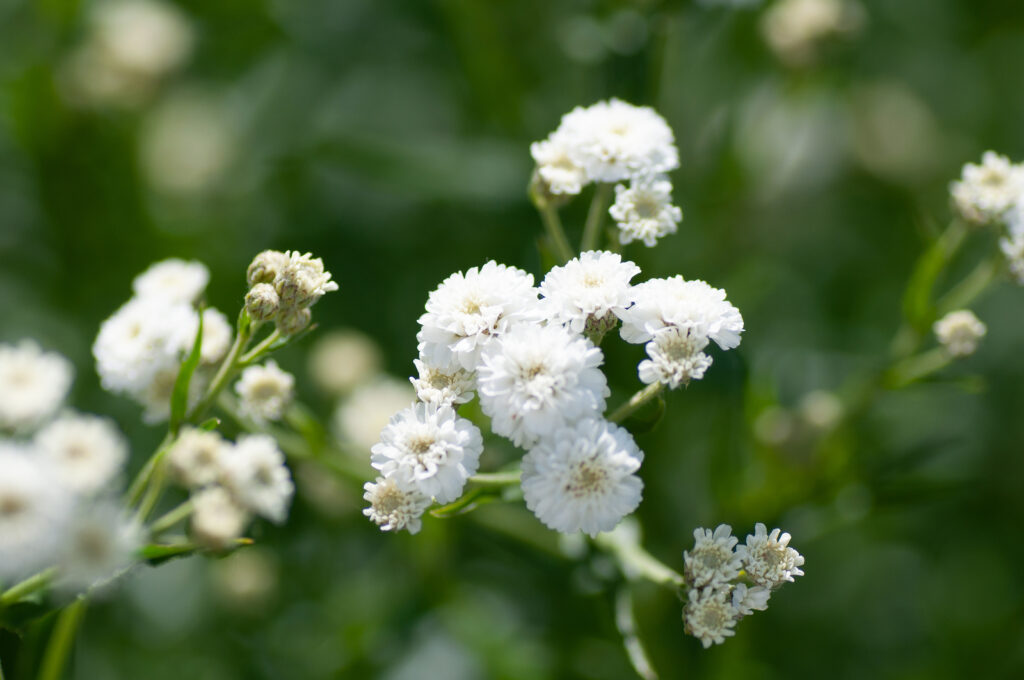
Get to know Gypsophila
- Plant type: Annuals and perennial varieties
- Growing Zones and range: Zones 3 to 9
- Hardiness: Hardy to -35°F (-37°C); drought tolerant; does not do well in humid climates; annuals are killed by hard frosts and prolonged heat in the 90°sF
- Height and width: 18 to 30 inches (45-76cm) tall; 2 to 4 feet (.6-1.2m) wide
- Foliage: Multi-branches, slender-stemmed; opposite lance-shaped leaves up to 3 inches long
- Flowers: Cloudlike sprays of tiny white or pink blossoms; flowers are 1/2 inch across
- Flower colors: Whie, pink, and red
- Bloom time: Early to midsummer
- Uses: mixed border filler; cutting garden; rock gardens
- Common name: Baby’s breath
- Botanical name: Gypsophila paniculata (perennial), Gypsophila elegans (annual)
- Family: Caryophyllaceae
- Origin: The Mediterranean to the Caucasus
Where to plant Gypsophila
- Plant Gypsophila in full sun or very light shade.
- Plant Gypsophila in average to evenly rich soil that is well-drained. The perennial species needs deep, well-worked soil; it has deep, wide-spreading soil.
- Gypsophila thrives in alkaline soil and will not tolerate acidic soil.
- Gypsophila prefers a soil pH of 7.0 to 7.5.
Gypsophila uses and companions
- Gypsophila can be planted as an airy complement in front of gladiolus and other summer-blooming bulbs.
- Plant Gypsophila in the cutting garden; they are an excellent addition to cut-flower arrangements.
- Good garden companions for Gypsophila include Crambe cordifolia, Echinacea, Echinops, Erigeron, Hemerocallis, and ornamental grasses.

When to plant Gypsophila
- Set established plants or seedlings in the garden in spring after all danger of frost is passed, two weeks after the last frost.
- Sow seeds indoors or in a cold frame 6 to 8 weeks before the last frost in spring.
- In mild-winter regions, sow seed outdoors in fall.
- For continuous blooms, sow additional seeds every 2 to 3 weeks.
- Early plantings may reseed themselves.
Planting and spacing Gypsophila
- Sow seeds 1/8 inch deep.
- Water and keep seeds at 60° to 70°F until seedlings germinate in about 7 days. Grow seedlings at temperatures near 70°F in bright sunlight or just below fluorescent light.
- Sow seeds outdoors where plants will remain 6 weeks before the last expected frost.
- Space Gypsophila 2 to 4 feet apart.
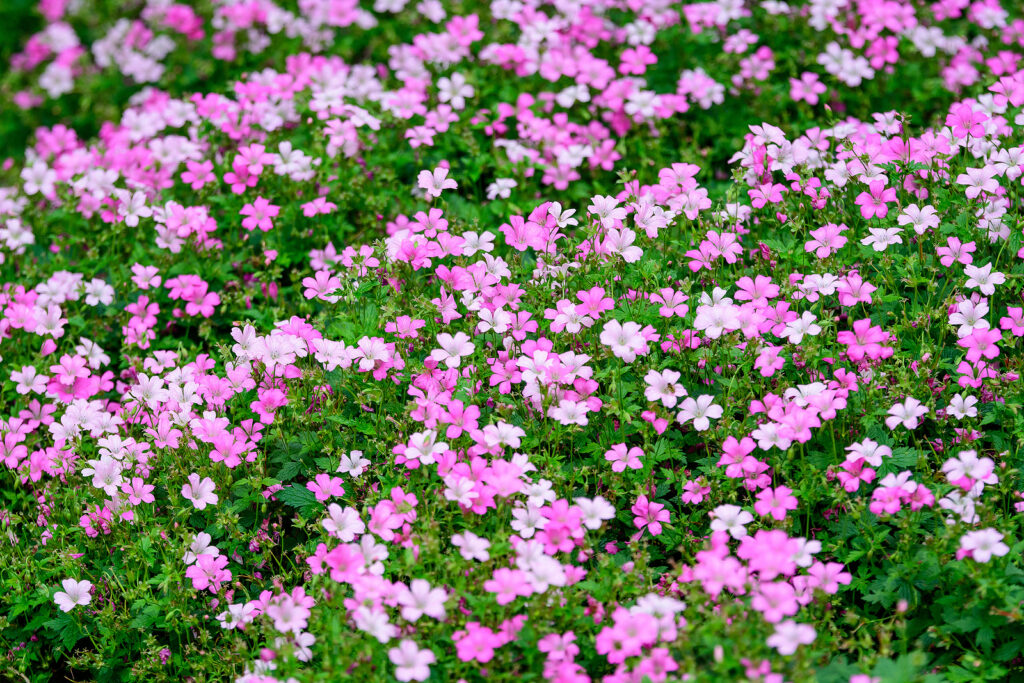
How to water and feed Gypsophila
- Keep the soil evenly moist for the best growth. Gypsophila will tolerate drought once mature.
- Fertilize Gypsophila at planting time with a mild liquid fertilizer; during the growing season fertilize occasionally if at all.
Gypsophila care
- Stake Gypsophila to support top-heavy stems.
- Cut plants back after blooming to encourage second blooming.
- Pinch back tips when plants are 6 to 8 inches (15-20cm) tall to stimulate side branch growth.
- When making successive sowings, harvest whole plants for indoor bouquets and replant fresh seeds.
- To dry flowers for everlasting bouquets, hang them upside down in a cool, dark place.
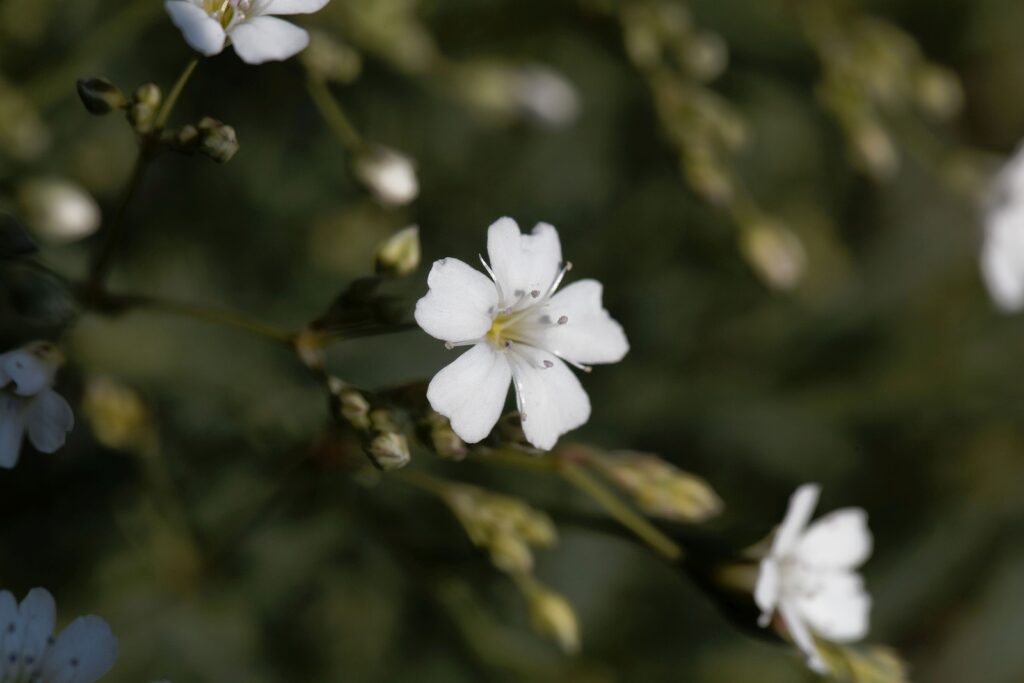
Gypsophila pests and diseases
- Pests include caterpillars, sow bugs, leaf miners, and slugs. To prevent insect damage sprinkle plants with diatomaceous earth.
Gypsophila propagation
- Gypsophila can be propagated by seed (annuals and perennials) or cuttings (perennials).
- Scatter seed and tamp in firmly. Seeds germinate in 7 to 14 days at 70° to 72°F (21°-22°C).
- Take cuttings 8 inches (20cm) long after flowers bloom. Dip ends in rooting hormone and set them in a vermiculite/perlite mix; cuttings will root in several months. Keep cuttings misted until they root.
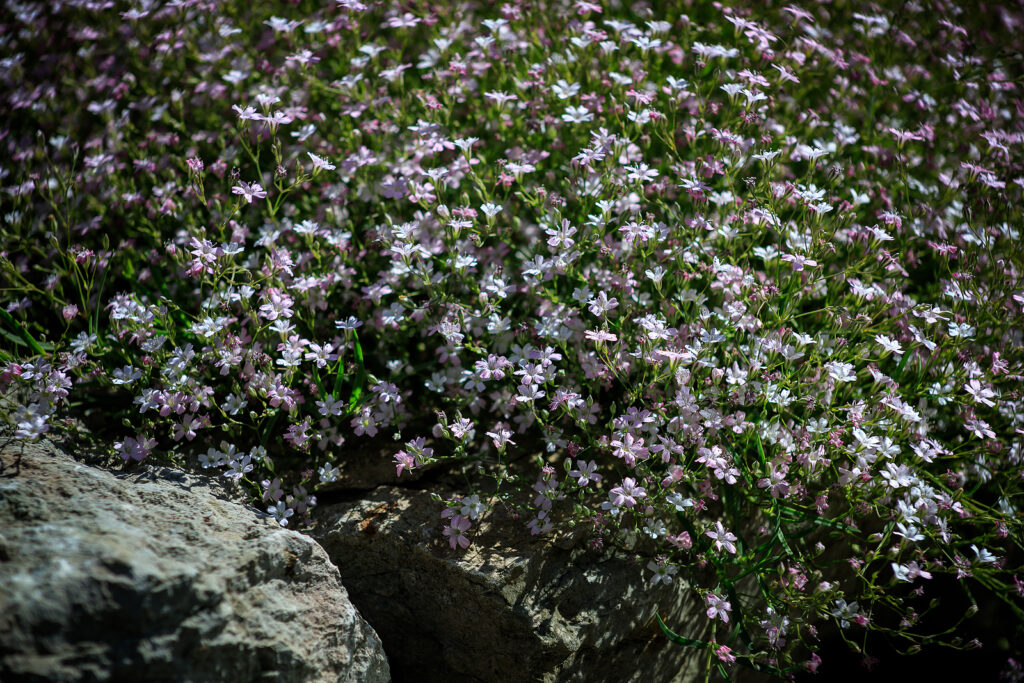
Gypsophila varieties to grow
- Gypsophia cerastiodies, perennial to 3 feet tall and much wider; clustered flowers from pink-veined to white to pink.
- G. elegans, annual baby’s breath (plants only live 5 to 6 weeks; make successive sowings). Cool-weather annual grows 12 to 24 inches (30-61cm) tall with gray-green leaves; produces masses of 1/2 inch, star-shaped flowers in white or pink in summer. Cultivars include ‘Covent Garden’ used for cut flowers and ‘Early Summer Lace’ bears flowers in white and shades of pink.
- G. paniculata, perennial baby’s breath. Shrubby perennial grow 2 to 4 feet tall and wide; bears cloudlike panicles of tiny white or pink flowers from mid-to-late summer; dwarf types include ‘Pink Fairy’, ‘Perfecta’, and ‘Snowflake.’
- G. repens, creeping baby’s breath. Perennial grows 4 to 8 inches (10-20cm) tall spreading bears loose, broad clusters of 1/2 inch wide pink or white flowers from early to midsummer.
Gypsophila frequently asked questions
Q: Is Gypsophila a perennial?
A: Gypsophila–baby’s breath–has both perennial and annual forms. Annual varieties include ‘Covent Garden’–white flowered, ‘Rose’, deep pink, and ‘Shell Pink’, light pink flowers.
Q: Baby’s breath is short blooming. What can I do to get longer blooms?
A; Make successive sowing or plantings of baby’s breath every two weeks for a continuous supply of flowers. Start seeds indoors four to six weeks before outdoor planting or sow directly in the garden.
Q: How do I dry baby’s-breath for indoor arrangements?
A: Pick long stems before the flowers are fully open, and hang them upside down in a cool, dark, dry place.

